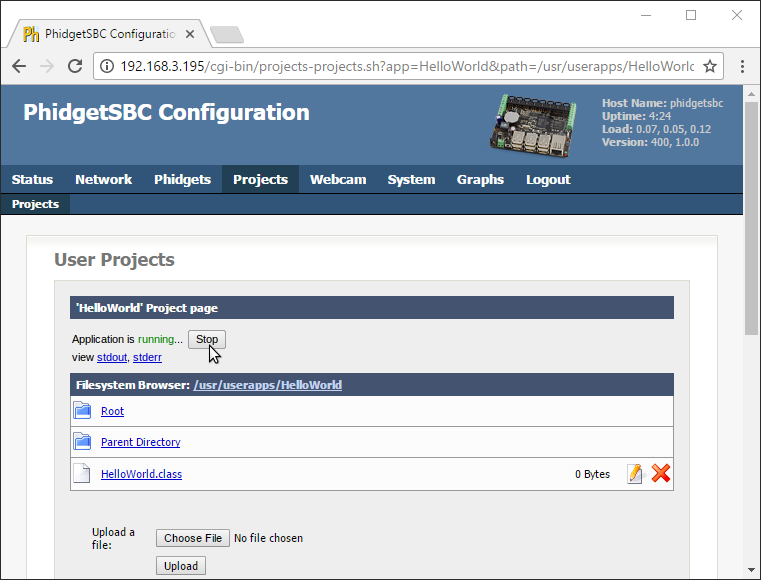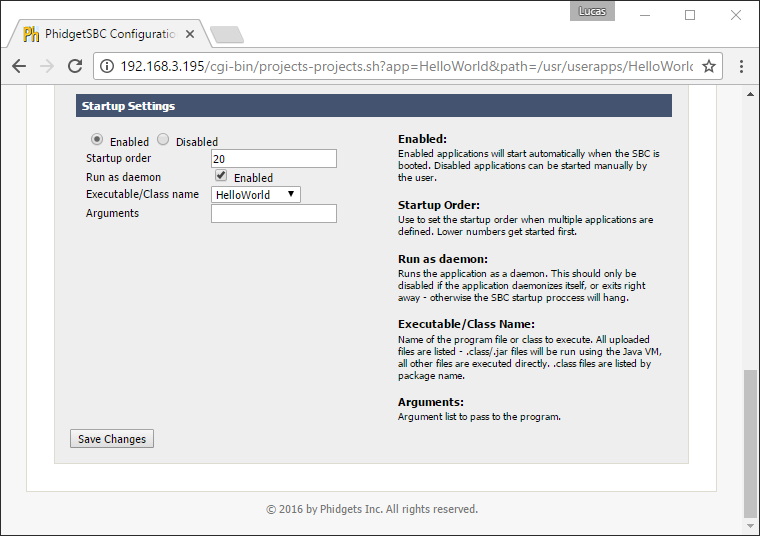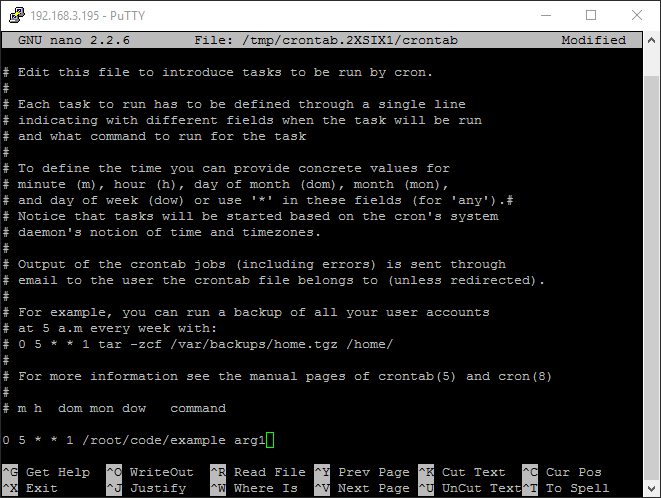PhidgetSBC with GCC
Welcome to using Phidgets with C! By using C, you will have access to the complete Phidget22 API, including events.
GCC is a compiler system for originally written for GNU, and is the standard compiler on unix-like operating systems. It is available on Windows by using tools
like MinGW or Cygwin to allow compilation of C programs from the command line.
Requirements
If you haven't already, check out the user guide in order to set up the
following:
● Networking
● Administrator password
This guide will cover development using an external machine. For development using the SBC itself, go back and select GCC - Linux as your environment.
Introduction
To begin, this video will help you get started:
Developing With An External Computer
There are two main ways in which you can access your SBC from an external computer:
● SBC Web Interface
● Secure Shell (SSH)
Since the SBC User Guide covers the web interface in detail, this guide will
cover SSH.
SSH
If you are unfamiliar with SSH, it is a simple yet powerful tool that allows you to log into a remote machine in order to execute commands. You can also
transfer files using the associated SCP tool.
In order to use SSH, you need the following:
● The SBC's IP address (e.g. 192.168.3.195) or the link local address (e.g. phidgetsbc.local)
● The administrator password
● SSH enabled on the SBC
SSH
You can enable SSH on the SBC Web Interface as shown below:
SSH on Windows
To use SSH on Windows, we recommend PuTTY. Use the images below as a guide for
configuring PuTTY (use the IP address or the link local address interchangeably):
SSH on Windows
After clicking open, simply login as root and provide the administrator password:
To transfer files between your SBC and Windows machine, we recommend either of these programs:
● WinSCP
● PuTTY PSCP
You will follow a similar process to access the SBC as described for SSH.
SSH on Linux and macOS
SSH is available on Linux and macOS by default. To run SSH, open the terminal and type:
ssh root@phidgetsbc.local
Or, something like this (you will need to know the IP address of your SBC):
ssh root@192.168.3.195
You will then be prompted for the password in order to gain access to the SBC:
SSH on Linux and macOS
To copy a file from the SBC to your development machine using SCP, open the terminal and type:
scp root@phidgetsbc.local:/path/to/source /path/to/destination
You can reverse this if you want to transfer a file from your development machine to your SBC:
scp /path/to/source root@phidgetsbc.local:/path/to/destination
Installing Packages For Development
Now that you are connected, you may want to start developing on the SBC.
Go to System->Packages, check Include full Debian Package Repository and click Install.
Finding Code Samples
To find the code sample to use for your Phidget, navigate to the Code Samples page and select
your device from the drop-down menu.
Once you select your device, the code sample generator will give you a working code sample, and a selection of options to customize it to your needs.
Using the Code Samples
If it's unclear what any of the options do, click on the nearby '?' for more info.
Once you've made your selections, click the Download Example button under Downloads.
Setting up a New Project
When you are building a project from scratch, or adding Phidget functionality to an existing project, you'll need to configure your development environment to
properly link the Phidget C library.
When developing on an external computer, you will write, compile, and test your programs on that machine. When you are ready, you will then upload your programs
to the SBC to compile and run them.
Setting up a New Project
Once your code is written, follow these steps to get your program running on the SBC:
1. Using the SBC Web Interface, create a new project:
Setting up a New Project
2. Transfer all the project files from the development machine to the SBC, either using the SBC Web Interface or a tool like
WinSCP.
The project directory will be:
/usr/userapps/ProjectName
Setting up a New Project
3. Use SSH to access the SBC terminal and go to the project folder:
cd /usr/userapps/ProjectName
Then compile the example by entering the following command in the terminal, replacing "example" with the name of your C file:
gcc example.c -o example -lphidget22
You can now run the program with the command:
./example
Success! The program is running on your SBC.
Running a Program Automatically
Click on the sections below for various automation options:
-----
Running a Program from the SBC Web Interface
To quickly test whether a program can be run automatically, you can try starting it from the SBC Web Interface.
1. To start the program, navigate to Projects->ProjectName->Startup Settings in the SBC Web Interface.
2. Select your program in the drop-down menu labeled Executable/Class Name.
3. Click the Start button on the SBC web interface.
4. You'll note that as it runs, there are two links below the Stop button which can be used to view the program output:
- stdout: view the program output like you would in a terminal or command prompt
- stderr: view the program error output
Run on Boot
Running on boot ensures that your program will never miss an event. As long as the SBC is running, your code will be running. This section assumes you have written and compiled your program on an external computer, and have uploaded it to the SBC Web Interface.
To have your program run on boot, navigate to Projects->ProjectName->Startup Settings in the SBC Web Interface. After selecting your project, copy the settings from the image below:
We will review some of the options that are shown in the image above:
- Startup Order: lower numbers boot first. Booting later means more programs are available for use, booting earlier means other programs can use your program.
- Run as a daemon: starts the program as a daemon. Unless you have explicitly written your program as a daemon, leave this checked, or else your SBC may hang on boot.
- Executable/Class name: your main Java class or C file.
- Arguments: any command line arguments the program needs.
After saving your changes, your program will run automatically whenever your SBC boots.
Run on a Schedule
Running your program on a schedule allows you to perform your task once a week, or once a minute without worrying about memory management issues or instability problems that may arise. It executes, and then gets cleaned up. To run your program on a schedule, we recommend using Cron. Cron can automatically schedule programs (known as jobs, or cron jobs). Cron simply reads a crontab file and runs whatever programs are listed, with whatever timing they are listed with. Cron runs continuously in the background, but the cron jobs only run as long as they naturally would, and then they exit.
Let's set up your first cron job. We will use nano to edit the crontab file, but feel free to use whatever editor you prefer.
First, set your editor to nano:
Next, edit your crontab file:
Finally, schedule your cron job:
#cron job that will run at 5AM every week:
0 5 * * 1 /root/code/myprogram argument1
After entering your task, simply save and exit the file.
What's Next?
Now that you've set up Phidgets in your C programming environment, you should read our guide on Phidget Programming Basics to learn the fundamentals of programming with Phidgets.
In particular, you should ensure that you familiarize yourself with how error handling is done in C, because it's not automatically implemented like in other programming languages. Once you've added error handling to your code, you can use the Error Code List to anticipate and handle various errors.
Continue down below for advanced information and troubleshooting for your device.




